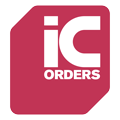Integrated circuit products, commonly known as microchips or simply chips, have revolutionised the world of electronics. These tiny devices, often no larger than a fingernail, are the beating heart of virtually all modern electronic devices. From computers and smartphones to cars and home appliances, integrated circuits are everywhere.
But what exactly are integrated circuit products? How do they work, and why are they so important? In this comprehensive guide, we’ll explore these questions and more, delving deep into the fascinating world of integrated circuits.
The Basics of Integrated Circuits
At its most basic, an integrated circuit is a set of electronic components – such as transistors, diodes, and resistors – that are fabricated onto a small piece of semiconductor material, typically silicon. The components are interconnected in a specific way to perform a particular function.
The primary advantage of integrated circuits over discrete components is their size. Because the components are etched onto a tiny chip of silicon, they take up much less space than their discrete counterparts. This miniaturisation has made it possible to pack more and more functionality into ever smaller devices.
Types of Integrated Circuits
There are several different types of integrated circuits, each designed for a specific purpose. Some of the most common types include digital circuits, analogue circuits, and mixed-signal circuits.
Digital circuits, as the name suggests, deal with digital signals. These are signals that can take on only two values, typically represented as 0 and 1. Digital circuits are used in computers, smartphones, and other digital devices.
Analog circuits, on the other hand, deal with analogue signals. These are signals that can take on a continuous range of values. Analog circuits are used in devices such as radios and audio amplifiers.
Mixed-signal circuits combine elements of both digital and analogue circuits. They are used in devices that need to process both digital and analogue signals, such as digital-to-analogue converters.
The Manufacturing Process of Integrated Circuits
The manufacturing process of integrated circuits is a complex and highly technical one. It involves several stages, each of which requires precise control over a variety of parameters.
The process begins with the creation of a silicon wafer. This is done by growing a single crystal of silicon and then slicing it into thin wafers. The wafers are then polished to a mirror-like finish.
Photolithography
The next stage is photolithography. This involves coating the silicon wafer with a light-sensitive material called photoresist. A mask, which contains the pattern of the circuit to be created, is then placed over the wafer. The wafer is exposed to ultraviolet light, which hardens the photoresist where it is exposed.
The unhardened photoresist is then washed away, leaving behind a pattern of hardened photoresist on the silicon wafer. This pattern serves as a template for the next stage of the process.
Etching and Doping
The silicon wafer is then etched, using a process called ion implantation. This involves bombarding the wafer with ions to create the various components of the circuit.
After etching, the wafer undergoes a process called doping. This involves introducing impurities into the silicon to change its electrical properties. Doping is used to create the p-type and n-type semiconductors that make up the transistors in the circuit.
Applications of Integrated Circuits
Integrated circuits have a wide range of applications in various fields. They are used in virtually all electronic devices, from computers and smartphones to cars and home appliances.
In the field of computing, integrated circuits are used in processors, memory chips, and graphics cards. They are also used in networking devices such as routers and switches.
In the automotive industry, integrated circuits are used in engine control units, anti-lock braking systems, and airbag controllers. They are also used in infotainment systems and navigation systems.
In the field of telecommunications, integrated circuits are used in mobile phones, base stations, and satellite communications systems. They are also used in fibre optic communication systems.
Future of Integrated Circuits
The future of integrated circuits is bright, with many exciting developments on the horizon. One of the most promising areas is the development of quantum computing, which could revolutionise the field of computing.
Another exciting area is the development of flexible and stretchable integrated circuits. These could be used in wearable devices, flexible displays, and even in medical devices that can be implanted into the body.
Despite the challenges, the future of integrated circuits looks promising. With continued advances in technology, we can expect to see even more powerful and versatile integrated circuits in the future.
As you look toward the future of integrated circuits and consider the potential for innovation in your projects, remember that IC Orders is here to support you. With over 12 years of experience in the electronic component market, we understand the intricacies of sourcing the right microchips for your needs. Whether you’re exploring quantum computing possibilities or integrating flexible circuits into cutting-edge designs, IC Orders is your go-to independent distributor. Let us help you navigate the opportunities and overcome the challenges by ensuring your Bill of Materials (BOM) is complete with the exact part numbers you require. Contact Us for A Quote Today and take the next step in advancing your electronic innovations.
